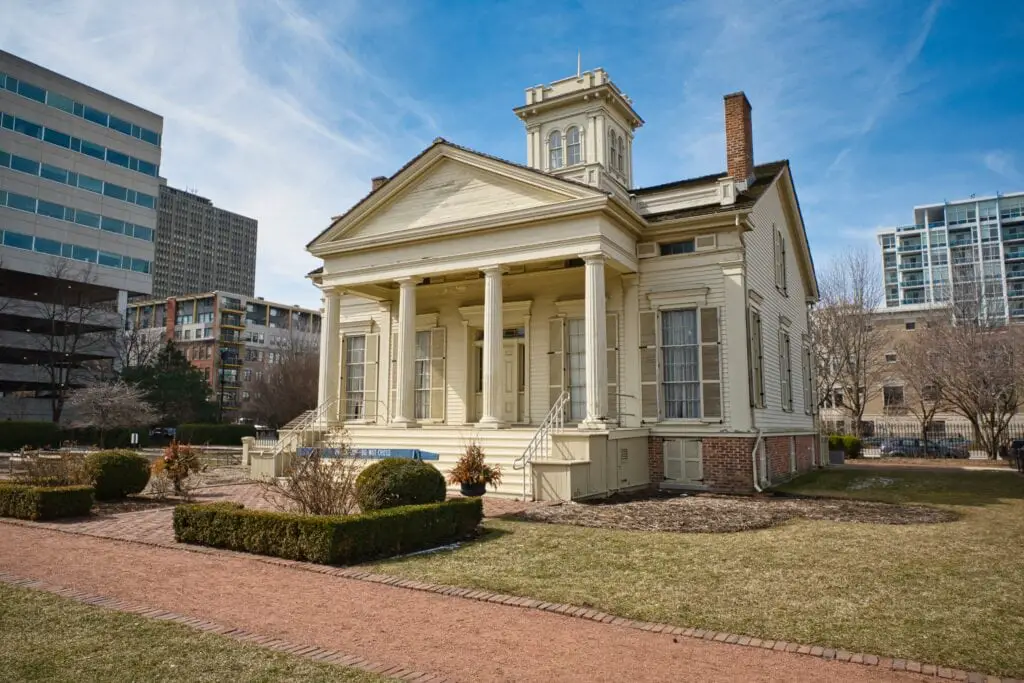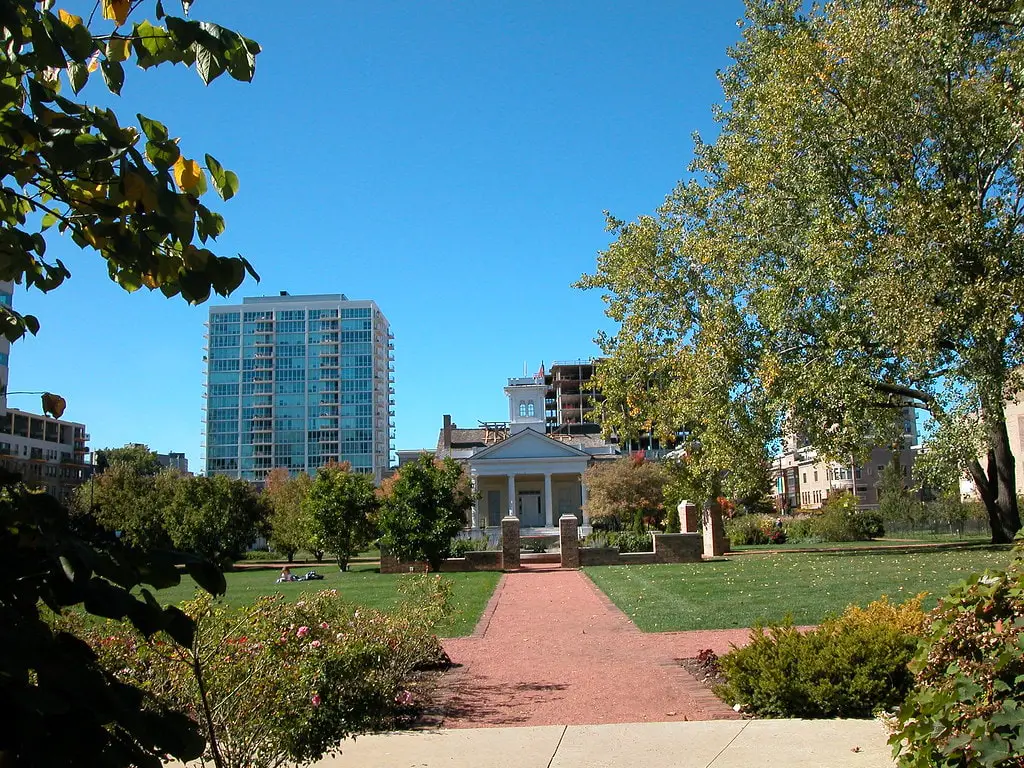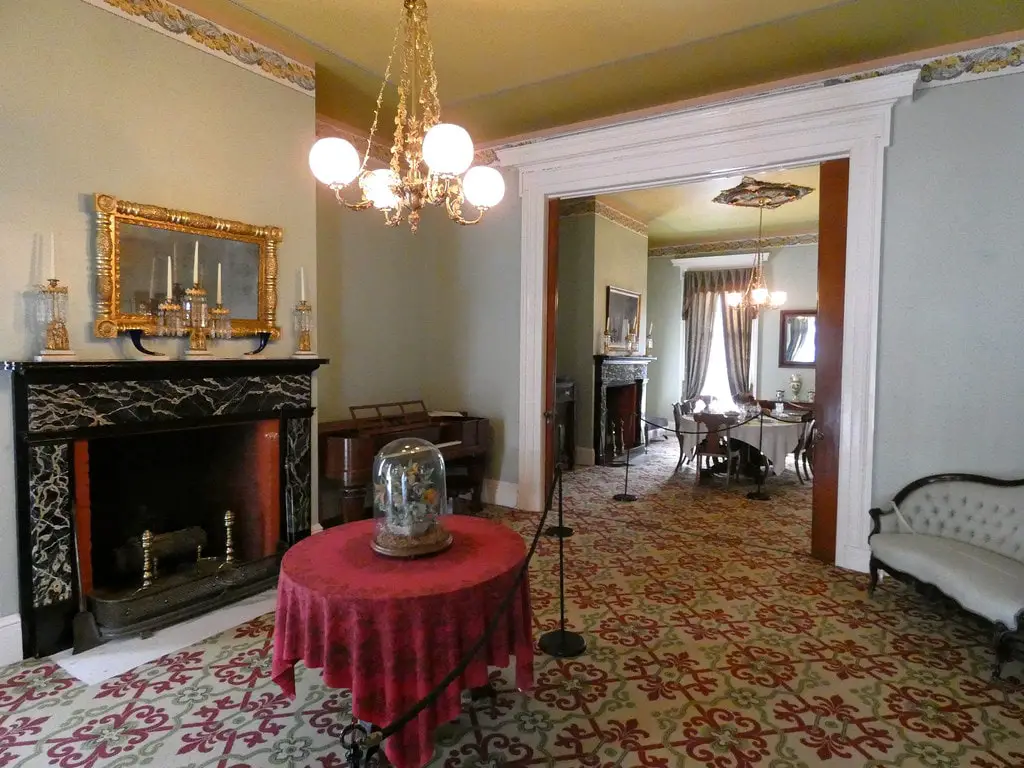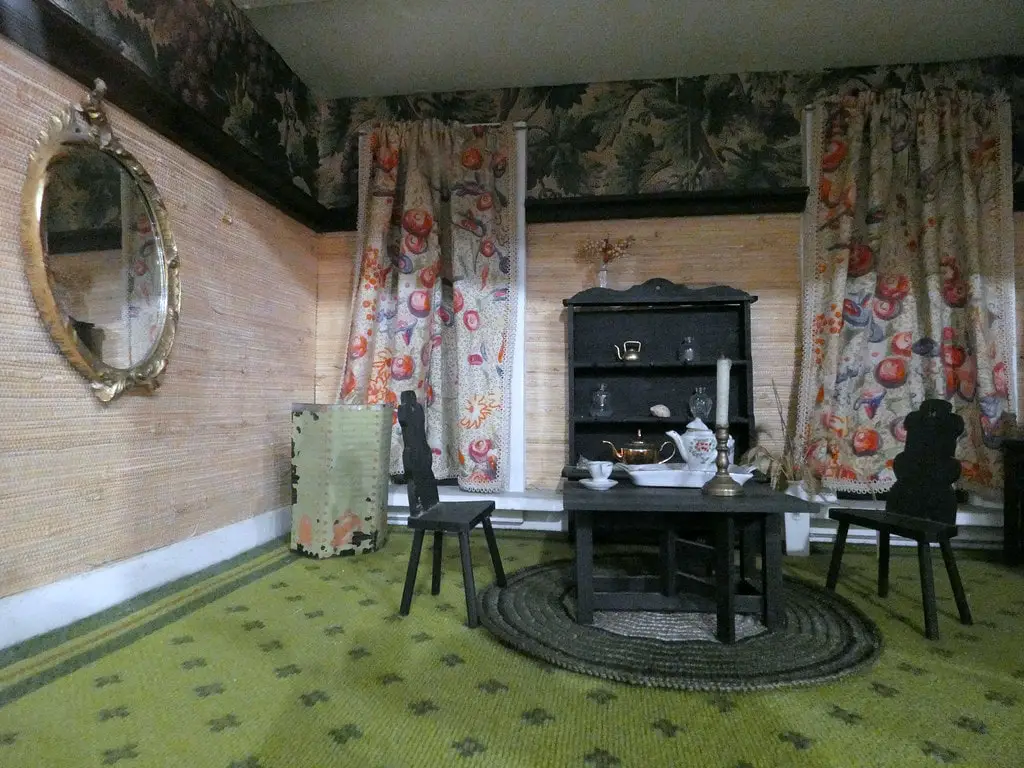The Historical Significance of Henry B. Clarke House
The Henry B. Clarke House, nestled in the heart of Chicago, Illinois, is a monument to the city’s architectural and cultural heritage.
Constructed around 1836, this Greek Revival-style home is the oldest house in Chicago and a tangible link to the city’s formative years.
The house’s inception dates back to when Chicago was on the cusp of receiving its city charter, transforming from a sprawling prairie into a bustling urban center.
Henry Brown Clarke, a New York State native, ventured to Chicago in 1833, a pivotal period when the city was ripe for development.
Clarke, alongside business partners William Jones and Byram King, founded King, Jones, and Company, a hardware business that provided essential building materials to the growing population.
This enterprise was crucial to the city’s expansion, supplying the necessary construction and infrastructure development resources.
The Clarke House, believed to have been built by local contractor John Rye, symbolizes the entrepreneurial spirit that fueled Chicago’s early growth.
Situated originally on a spacious lot near Michigan Avenue and 17th Street, the Clarke House has witnessed the evolution of Chicago from its infancy.
Its relocation in 1977 to its site near Indiana Avenue and 18th Street, close to its original location, underscores the city’s dynamic changes and the efforts to preserve its historical landmarks.
The house’s survival through the years, including the Great Chicago Fire of 1871 and the city’s relentless expansion, reflects Chicago’s architectural heritage’s resilience and enduring significance.
As a part of the Prairie Avenue Historic District in the Near South Side community, the Clarke House today is surrounded by parks and gardens, offering a serene glimpse into the past amidst the urban landscape.
This district, known for its historical and architectural importance, provides a backdrop that enhances the house’s significance as a museum and educational resource.
The Clarke House’s journey through time, from its construction to its current status as a cherished historical site, mirrors the broader narrative of Chicago’s development and the ongoing efforts to honor and preserve its rich history.
For those interested in exploring Chicago’s historical sites, things to do in Chicago, Illinois, include visiting the Clarke House Museum to experience firsthand the city’s architectural evolution and to gain insights into the life of one of its early influential families.
The Clarke House Through the Years
The journey of the Henry B. Clarke House through the annals of Chicago’s history is a testament to the city’s ever-changing landscape and its commitment to preserving its cultural heritage.
After its construction in the mid-1830s, the Clarke House initially stood on a sprawling 20-acre estate near the burgeoning Michigan Avenue, which was then on the outskirts of the young city.
This estate, a mix of urban and pastoral, reflected the Clarke family’s status and Chicago’s developmental phase, balancing its rural origins and urban aspirations.
The Clarke House’s narrative took a dramatic turn with its first relocation in 1872, initiated by John Chrimes, a prominent Chicago tailor who purchased the house after Caroline Palmer Clarke’s death.
Seeking to escape the bustling city center, Chrimes moved the home to a more serene location at 45th Street and Wabash Avenue, then part of the Hyde Park township.
This move marked a significant physical shift and a transition in the house’s role within the community from a private residence to a symbol of historical preservation.
The house’s history is further marked by its stewardship under the St. Paul Church of God in Christ in the 20th century.
Under the guidance of Bishop Louis Henry Ford and his wife, Margaret, the Clarke House was preserved as a vital piece of Chicago’s architectural and cultural fabric.
Their efforts culminated in the house’s second and most dramatic relocation, in 1977, to its current Chicago Women’s Park site.
This involved lifting the entire structure over the L tracks on a cold December night.
This relocation saved the house from potential demolition and repositioned it within the Prairie Avenue Historic District, ensuring its preservation for future generations.

Architectural Features and Restoration Efforts
The architectural integrity of the Henry B. Clarke House has been meticulously preserved.
It showcases the Greek Revival style that was prevalent in the United States during the early 19th century.
The house’s exterior, characterized by its symmetrical facade, Doric columns, and triangular pediment, echoes the classical architecture of ancient Greece, reflecting the cultural aspirations of America’s early settlers.
Adding an Italianate dome and a rear portico with Doric columns by Caroline Palmer Clarke in the mid-19th century enhanced the house’s aesthetic and functional appeal, blending classical elements with the then-modern Italianate style.
Restoration efforts have been critical to the Clarke House’s history, particularly since its designation as a Chicago Landmark in 1970 and its addition to the National Register of Historic Places in 1971.
These efforts have focused on preserving the house’s original features while ensuring its structural integrity.
The restoration process has involved detailed research and careful craftsmanship to maintain the authenticity of the house’s design, from the color of the exterior paint to the interior furnishings that reflect the Clarke family’s life in the 1830s and 1840s.
The collaboration between the City of Chicago, the Chicago Department of Cultural Affairs and Special Events, and The National Society of The Colonial Dames of America in Illinois has been instrumental in these restoration efforts.
This partnership has enabled the Clarke House to serve as a museum and educational resource, offering insights into Chicago’s architectural history and the lifestyle of its early residents.
Through these restoration efforts, the Clarke House is a beacon of historical preservation, embodying the spirit of Chicago’s past while engaging with present and future generations.

The Clarke House as a Museum
The transformation of the Henry B. Clarke House into a museum marks a significant chapter in its storied history, turning it into a cornerstone of cultural education and historic preservation in Chicago.
Operated by the Chicago Department of Cultural Affairs and Special Events (DCASE) in partnership with The National Society of The Colonial Dames of America in the State of Illinois (NSCDA-IL), the museum offers a window into the life of early Chicagoans.
Established since the house’s relocation to the Chicago Women’s Park in the Prairie Avenue Historic District, this partnership has been pivotal in curating and maintaining the house’s period-appropriate furnishings and artifacts.
The museum’s collection, meticulously assembled by the NSCDA-IL, features authentic 19th-century furnishings and decor that reflect the Clarke family’s lifestyle and the era’s aesthetic sensibilities.
This includes original pieces owned by the Clarke family and items donated or loaned by members of the NSCDA-IL and other benefactors, ensuring that each room within the house tells a part of the broader story of Chicago’s early days.
The dedication to authenticity extends to the smallest details, from wallpaper patterns to fabric choices, offering visitors an immersive experience of the 1830s and 1840s.
Educational programs and guided tours are a hallmark of the Clarke House Museum, designed to engage visitors of all ages with the history of Chicago and the Clarke family.
These programs often highlight the house’s architectural significance, the period’s social history, and the era’s technological advancements.
By serving as an educational resource, the Clarke House Museum plays a crucial role in fostering an appreciation for historical preservation and understanding the forces that shaped Chicago into the city it is today.

The Renaming of the Clarke House
In a significant move to honor the contributions of all individuals pivotal to its preservation, the Chicago City Council approved renaming the Henry B. Clarke House in November 2022.
The house was officially renamed to the Henry B. and Caroline Clarke/Bishop Louis Henry and Margaret Ford House, a decision that reflects the city’s commitment to acknowledging the diverse histories and efforts that have shaped its cultural heritage.
This renaming ceremony, led by Mayor Lori E. Lightfoot and supported by 3rd Ward Alderman Pat Dowell, was a momentous occasion that underscored the importance of inclusive historical recognition.
The renaming initiative was driven by the profound impact that Bishop Louis Henry and Margaret Ford had on the preservation of the house, alongside the foundational legacy of Henry B. and Caroline Clarke.
Through their stewardship and advocacy in the mid-20th century, the Fords saved the house from potential demolition and ensured its status as a landmark of Chicago’s architectural and social history.
Their efforts, coupled with those of the Clarke family in the house’s early years, have been immortalized through this renaming, ensuring that future generations will recognize the collaborative endeavor that the preservation of the Clarke House represents.
This act of renaming also reflects a broader trend in historic preservation and cultural recognition, where the contributions of all individuals and groups are acknowledged and celebrated.
By embracing the full spectrum of its history, the Clarke House stands as a testament to the power of community, resilience, and shared history in shaping Chicago’s identity.
As it is now known, the Clarke-Ford House continues to serve as a beacon of historical preservation, education, and cultural enrichment for the city and its visitors.

Public Engagement and Educational Programs
The Clarke-Ford House Museum has become a focal point for public engagement and educational outreach in Chicago, offering diverse programs that cater to a wide audience.
These initiatives are designed to enhance the public’s understanding of Chicago’s early history, the house’s architectural significance, and its inhabitants’ daily lives during the 19th century.
The museum’s educational programs, often developed in collaboration with local schools, historical societies, and community organizations, aim to foster a deeper appreciation for the city’s rich cultural heritage.
One key component of the museum’s educational outreach is its guided tours, which provide visitors with a comprehensive overview of the house’s history, architecture, and the Clarke family’s role in the development of Chicago.
These tours are led by knowledgeable docents who share fascinating stories and insights about the period’s social customs, technological advancements, and architectural trends.
Specialized programs for students align with curriculum standards, offering hands-on activities and interactive learning experiences that bring history to life.
In addition to educational tours, the Clarke-Ford House Museum hosts various special events throughout the year, including lectures, workshops, and historical reenactments.
These events are designed to engage the community and provide deeper insights into specific aspects of 19th-century life, from fashion and cuisine to gardening and craftsmanship.
The museum’s efforts to reimagine its public programming reflect a commitment to making history accessible and relevant to contemporary audiences, ensuring that the Clarke-Ford House remains a vibrant center for cultural education in Chicago.

The Clarke House in the Context of Chicago’s Historic Preservation
The story of the Clarke-Ford House Museum is symbolic of the broader narrative of historic preservation in Chicago.
The city’s approach to preserving its architectural and cultural heritage has evolved significantly over the years, and the Clarke-Ford House serves as a testament to these efforts’ challenges and triumphs.
Chicago’s historic preservation movement has gained momentum since the late 20th century, marked by an increasing recognition of the importance of saving historic structures and the stories they embody.
The preservation of the Clarke-Ford House, from its initial designation as a Chicago Landmark to its inclusion on the National Register of Historic Places, highlights the collaborative efforts between government agencies, non-profit organizations, and community advocates.
This partnership model has been replicated in preserving other historic sites across the city, demonstrating the effectiveness of collective action in safeguarding Chicago’s architectural legacy.
Moreover, the Clarke-Ford House’s role within the Prairie Avenue Historic District underscores the importance of preserving entire neighborhoods as living museums that reflect the city’s historical and architectural diversity.
The district’s designation as a historic area has helped protect numerous other buildings from demolition, promoting a holistic approach to urban preservation that values the integrity of historic landscapes.
Through its preservation and educational programming, the Clarke-Ford House Museum inspires future generations to appreciate and advocate for preserving Chicago’s historical treasures, ensuring that the city’s past remains a vibrant part of its present and future.
